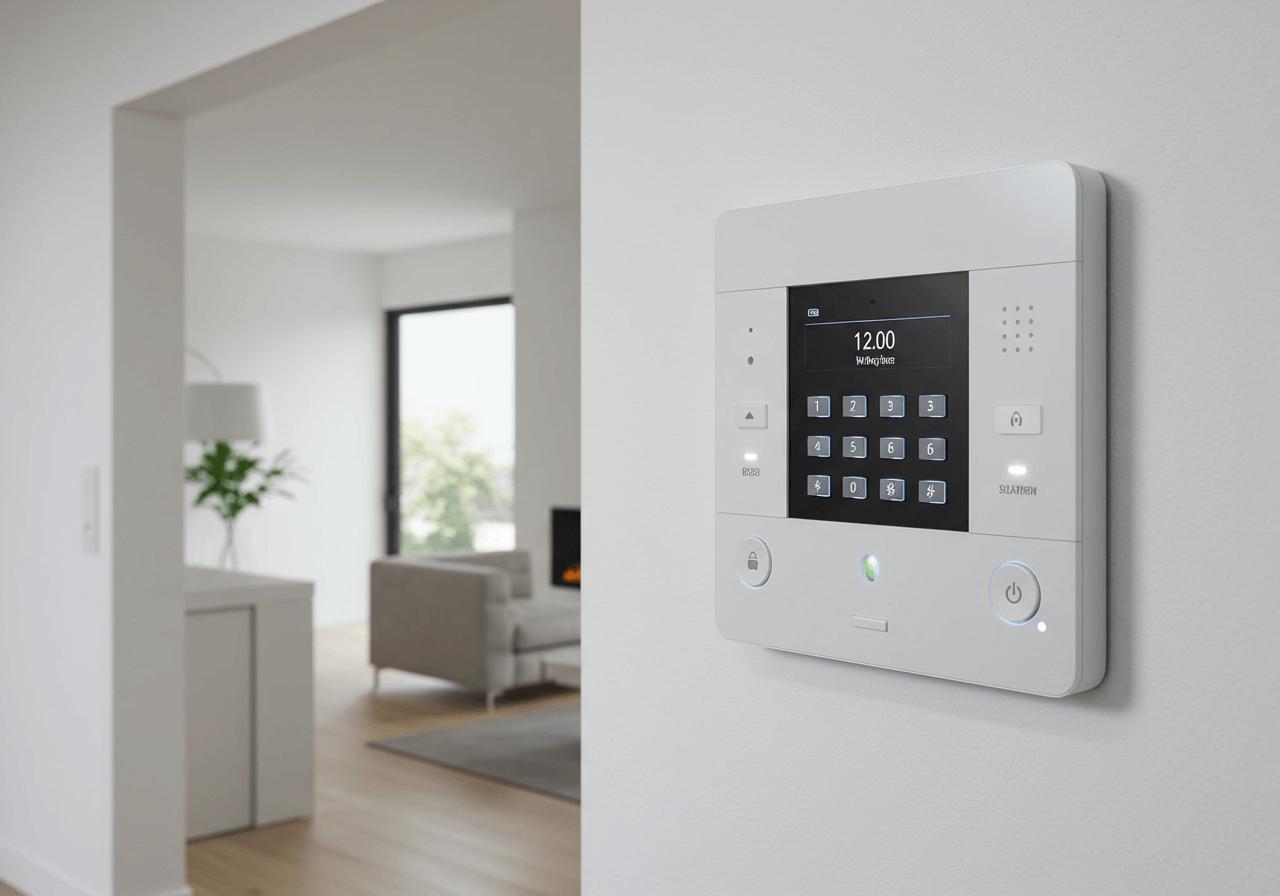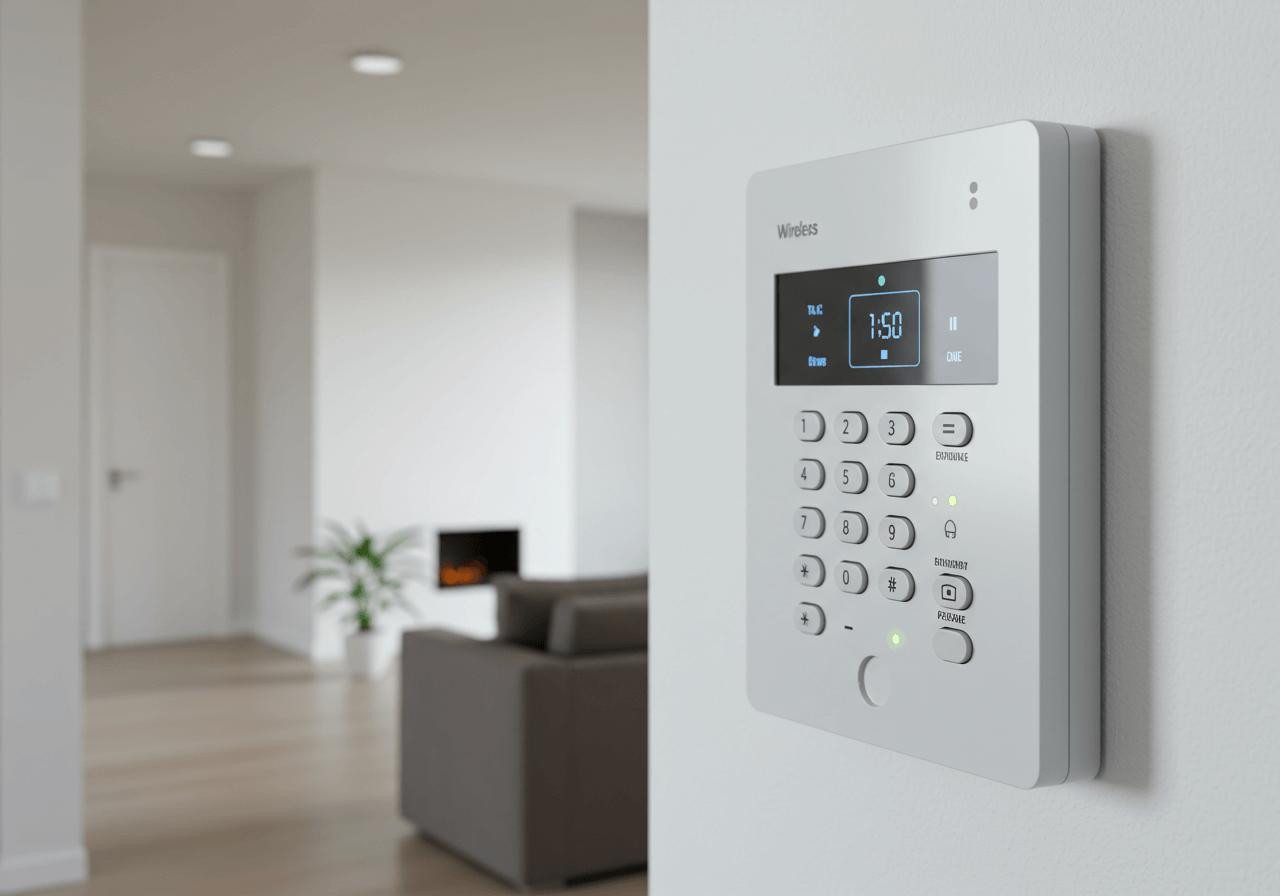Intruder alarm systems, often called burglar alarms, represent an important layer of defence for both domestic and commercial properties (homes and businesses). These security systems offer varying degrees of protection, from traditional wired setups to modern smart home security systems. The market provides diverse options from trusted brands allowing you to adjust a security solution to specific needs, budgets, and property types, helping you protect what matters.
Intruder alarms come in several varieties including wired, wireless, monitored, unmonitored (bells-only), and smart alarm systems, each with advantages. Understanding these helps home or business owners select the most appropriate security system for their requirements.
Key Takeaways:
- Wired and wireless alarm systems are the fundamental choice, affecting installation and maintenance.
- Opting for monitored alarms provides good oversight via an Alarm Receiving Centre (ARC) but requires ongoing costs.
- Smart alarm technology enables remote control via smartphone and integration with other security devices.
- Different sensor technologies (detector types like PIR or shock sensors) serve specific purposes.
- Choosing the right burglar alarm involves a security assessment of requirements, property, and budget. Consider advice from security experts.
Wired vs. Wireless Alarm Systems: Understanding the Basics
The foundation of any intruder detection system (intruder alarm) begins with its connection method. Wired alarm systems are traditional; components like sensors, keypads, and sirens connect via fixed wiring. They offer exceptional reliability, ideal for large or permanent installations.
The drawback is the installation. Installation by a qualified installer is needed, routing cables, which can be costly. However, they typically need less maintenance and no sensor battery changes.
In contrast, wireless alarm systems use radio frequencies. This offers flexibility and is often easy to install, great where wiring is impractical. These wireless alarms rely on battery-powered sensors, needing replacements every few years. Popular options exist from brands like Yale or Texecom.
Hybrid systems combine technologies, useful when expanding existing security systems without full rewiring.

Monitored vs. Unmonitored Alarm Systems
Oversight level is another distinction. Monitored alarm systems connect to external Alarm Receiving Centres (ARCs) providing 24/7 surveillance. When the alarm is triggered, the ARC contacts owners and can dispatch emergency services (like the police or private security, depending on the service – some providers like Verisure offer guard response). This alarm signal verification helps reduce false alarms.
Adept monitoring offers significant confidence, especially for high-risk properties or when absent. Insurance discounts are often available. Leading providers like ADT offer complete alarm services.
Considerations for monitored systems:
- Monitoring contracts (monthly/annual).
- Faster emergency response.
- Verification procedures.
- Improved security for valuables.
Unmonitored (“bells-only”) house alarms produce a loud siren locally when the alarm is activated but don’t notify external parties. They cost less initially with no ongoing fees, suitable for lower-risk areas. Effectiveness relies on neighbours or passersby responding.
Smart Intruder Alarm Systems: Technology-Improved Security
Smart intruder alarms integrate with home security ecosystems. These home alarm systems offer control via smartphone apps for remote management. Brands like Yale offer popular smart home alarms.
Key features:
- Real-time alerts and notifications to your smartphone.
- Remote arming and disarming via app or keypad.
- Integration with CCTV systems for live video.
- Automation with smart lights/locks.
- Activity logs.
Smart systems need reliable internet and may have subscriptions. They offer convenience for monitoring your home or business remotely. You can often manage entry and exit settings easily.
Specialised Alarm Types for Specific Needs
Beyond standard categories, specialised alarm types exist. Silent alarms notify authorities/ARCs without an audible siren, useful in retail to potentially catch a burglar or intruder.
High-decibel alarms maximise the deterrent effect with loud sirens.
Other options:
- Dialer burglar alarms (call pre-set numbers).
- Outdoor perimeter protection systems.
- Dummy alarm boxes (visual deterrent only).
These address specific vulnerabilities, allowing customised ways to protect your property.
Sensor Technologies in Modern Alarm Systems
Alarm system effectiveness depends on its sensor technology. Motion detection (PIR – Passive Infrared) is common, detecting heat signature changes inside the home or premise.
For perimeter protection, magnetic contacts on doors or windows trigger when opened. Glass-break sensors detect breaking glass sounds. Vibration (shock sensors) register movement on walls/windows.
Advanced systems might use:
- Thermal sensors.
- Pressure mats.
- RFID protection.
- Dual-technology sensors (reducing false alarms).
Layered protection using multiple sensor types makes bypassing the security system harder for an intruder. Every alarm setup should consider the best detector types for the environment.
Choosing the Right Alarm System for Your Property
Selecting the appropriate intruder alarm system requires assessing property size, layout, and vulnerabilities. Consider occupancy – vacant properties benefit more from monitored alarms. A security assessment by security experts can help.
Budget includes:
- Equipment costs (from control panel / alarm panel to sensors).
- Installation fees (professional installation recommended for complex systems).
- Monitoring subscriptions.
- Maintenance.
- Potential insurance reductions.
For commercial properties, compliance (e.g., meeting standards recognised by bodies like SSAIB) might dictate requirements. Working with leading security specialists or a reputable installer helps identify the optimal security solution. Consider a full range from trusted brands when you buy burglar alarms.
With the right alarm system installed, you gain improved security and valuable peace of mind, knowing you have protection suitable to protect your home or business.
Sources
getsafeandsound.com – Types of Alarm Systems
mammothsecurity.com – Burglar Alarm Types
confused.com – Different Types of Burglar Alarms
justicesecurity.co.uk – Intruder Alarms Types of System
evalink.io – How to Pick the Right Burglar Alarm System

